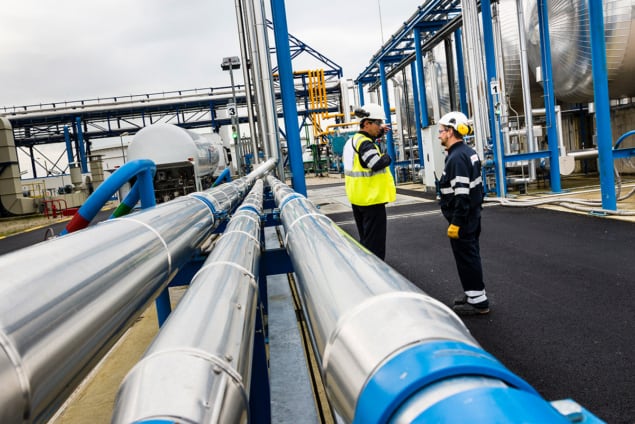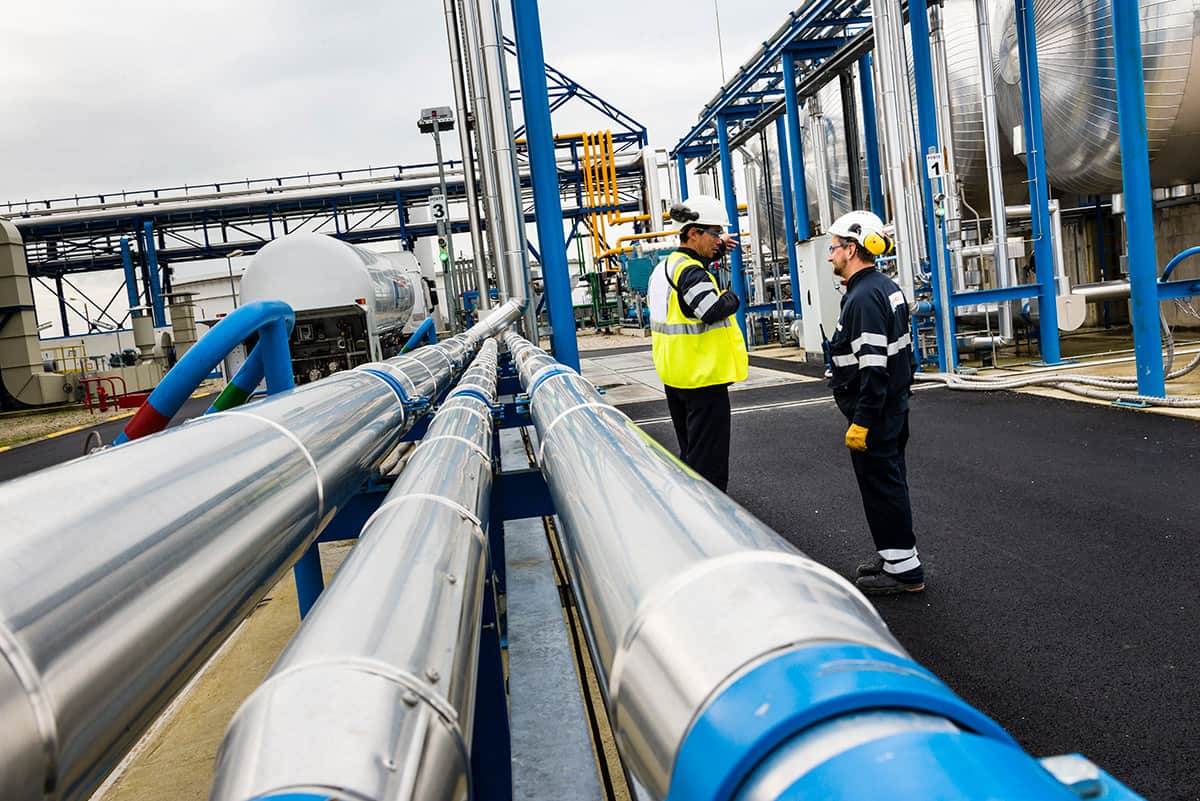The UK has announced a £20bn package for carbon-capture projects, but not everyone is convinced it will be enough to deliver the country’s net-zero targets, as Michael Allen reports

The UK government has pledged up to £20bn for projects that could capture and store up to 30 million tonnes of carbon dioxide (MtCO2) annually by the end of the decade. The government has also announced details of eight industrial plants that will likely be the first to capture carbon for storage in the UK. Despite the ambitious plans, however, some are unconvinced that the initiative will be enough to help the country meet its net-zero carbon ambitions.
The UK’s strategy for carbon capture and storage was originally unveiled in an energy security plan published in October 2021. But there are currently no commercial carbon-capture-and-storage facilities in the UK and funding to support the initiative was only announced in the budget in March. As well as aiming to capture and store 20–30 MtCO2 each year by 2030, the government claims the UK’s continental shelf could store 78,000 MtCO2, equating to around 200 years of the UK’s annual emissions.
The government’s plans are based on four industrial clusters that will link different carbon-capture sites and be responsible for transporting and storing carbon dioxide. The first two clusters – HyNet in north-west England and North Wales, and the East Coast Cluster in Teesside and Humber – have already been approved and are due to start up by the mid-2020s. In its updated energy security plan released in March, the government announced details of eight projects that could be the first to capture carbon in these two clusters.
The eight projects cover industries such as hydrogen production, energy from waste, a gas-fired power station, and cement and lime works. The projects will now enter negotiations to agree contracts with the government, but funding is not yet guaranteed for any of them. If approved, however, they would capture carbon dioxide from these industrial processes and put it into pipelines for transport to offshore storage sites, such as depleted oil and gas fields.
According to the UK government, its plans could – when combined with private investment – create up to 50,000 jobs and lead to a new sustainable industry. The strategy also includes a process to identify and establish the two other industrial clusters, which are due to come online by 2030. It is thought that these are likely to be the Acorn cluster in north-east Scotland and the Viking project based around the port of Immingham in Lincolnshire.
The government hopes the four clusters will eventually capture and store up to 6 MtCO2 from industry every year. They will also aim to remove at least 5 MtCO2 from the atmosphere per year through techniques such as direct air capture with carbon storage (DACSS) and bioenergy with carbon capture and storage (BECCS). As part of these objectives, the government says that power plants and hydrogen-production facilities equipped with carbon-capture technology will help decarbonize the UK’s electricity system and create a source of low-carbon “blue” hydrogen.
It is not clear, however, where the remaining 9–19 MtCO2 will come from to make up the 20–30 MtCO2 target. There is also concern that the UK will continue to extract oil and gas from the North Sea. In March almost 700 scientists signed an open letter written by Emily Shuckburgh from the University of Cambridge and Bob Ward from the Grantham Research Institute on Climate Change and the Environment, which warned that new oil and gas fields would undermine the UK government’s claimed global leadership on net-zero emissions and make it harder for the world to limit warming to 1.5 °C.
It is hard to see how the UK can meet its 2050 net-zero target if new oil and gas sites are licensed
Naomi Vaughan, a climate scientist from the University of East Anglia, told Physics World that carbon capture and storage is “needed” to get to net zero in the UK. But she believes it is hard to see how the UK can meet its 2050 net-zero target if new oil and gas sites are licensed. Vaughan claims that the £20bn investment “looks like a bit of a headline-grabbing figure” and that the government’s plans lack detail on timelines and how that figure will be reached.

Life in a carbon-neutral world
She also believes that even when everything technologically feasible to decarbonize has been achieved, net zero is still likely to require re-engineered forms of atmospheric greenhouse-gas removal like BECCS and DACSS. Vaughan adds that good oversight and regulation will be needed to ensure carbon capture is only used where needed, and not as a shortcut.
Stuart Haszeldine, a climate scientist from the University of Edinburgh, however, thinks the UK’s plans are “terrific”. He believes the UK has no choice but to use carbon capture and storage, but believes the target of 30 MtCO2 by the end of the decade is “only about half of what we need to do” to tackle climate change. While Haszeldine welcomes the range of projects put forward for approval, he wants a shift from government to industry so that progress can accelerate.
